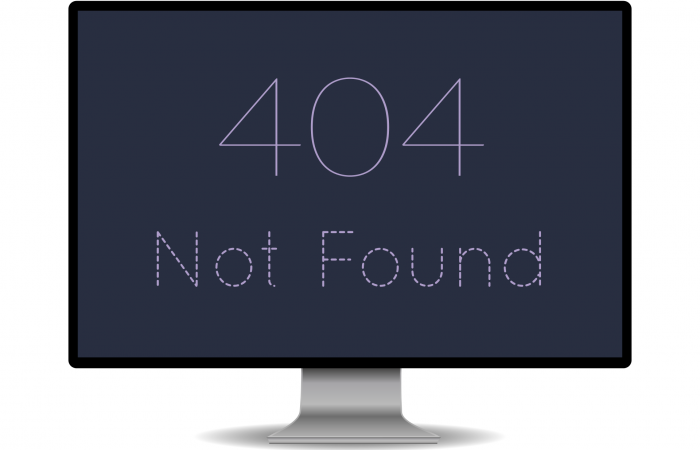No one goes looking for a 404 error page. Browsers are likely to jump straight off. Some may check the URL, but only if its ‘clean’ and checkable (in recognisable words), but many won’t. Some may try another page in your website, or perform another search. Many won’t. In the meantime, their initial annoyance is likely to escalate to more than a little frustration, with Google ranking you less, the more that 404 errors are received, which can lead to significant visitor losses over time.

So, what can you do to stop a lack of faith in your website caused by 404 error pages?
Minimise 404 error pages
Everyone has at some point had one of their browsers ending up with the 404 error page on their site. They are not uncommon as they are a typical result of website content being removed or moved to another URL without the internal links being adjusted correctly, or the URL was written or typed incorrectly, or that the connection is broken, due to website server issues.
But, it’s important for you to correct your 404 errors, and those that are not just your own internal links, but your external links on other sites too. But, if you don’t know they are there – and you are not going to necessarily know, it’s hard to do something about them.
But you can now easily find them with a choice of free tools, such as Google Search Console. There are others, but if you already have a Google account there are other free, useful resources in here too, and any corrections you make will be marked as corrected. It’s important to do this regularly, so make a six-monthly plan to get your 404 errors cleaned up
Have clean URLs
If your browser is proactive, they’ll try to find you by correcting a URL that looks wrong, and trying to go back through the directory levels, to, for example, your homepage URL that’s the root of perhaps a longer URL. But they can only do this if the URL is in recognisable words, and not random characters.
If your URLs are understandable words that are logical and recognisable, they are more user-friendly when it comes to mitigating browsers’ frustration of 404 errors.
Personalise 404 error pages
A personalised 404 error page can mean the difference between a browser who is never going to search for you and your site again, and one who is actually encouraged to go to further lengths to find you, and possibly become even more engaged with you.
A personalised 404 error page is a brand and engagement opportunity of the highest order, therefore one not to be missed. Make sure your error page is inline with your brand and the tone of content on the rest of your website. You could have a comedic or entertaining, as well as apologetic, message, or a helpful search function and/or links to your home and/or contact page/s.
Your effort in caring for your browsers’ experience will not go amiss. They are much more likely to forgive you, and take the minor inconvenience as all part of the online experience, and then, hopefully go on to find the content they were looking for successfully.
< Read more articles on our Web Academy
Providing digital help and support – what to consider
Do you want to offer your customers digital help and support they can access online? It’s not as simple as just removing the phoneline. Here’s what to consider.
Websites - don’t just build and leave
Nothing says ‘apathy’ like a website built then just left. Here’s why you need to keep your website up to date and checklist of eight things to do to stay current.